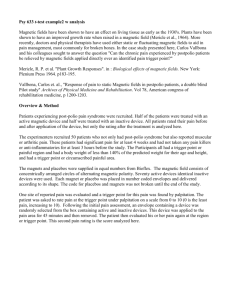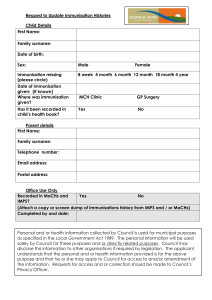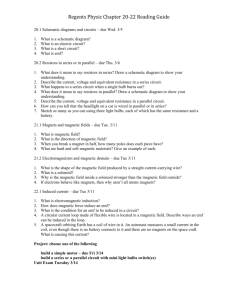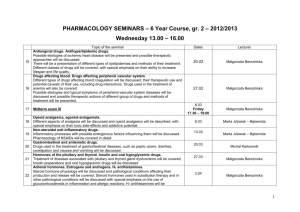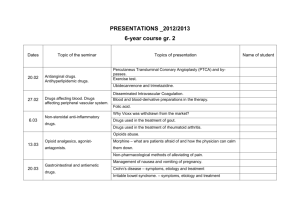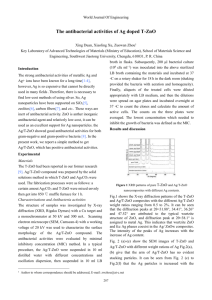RBH-1 Student name: Day 10
advertisement
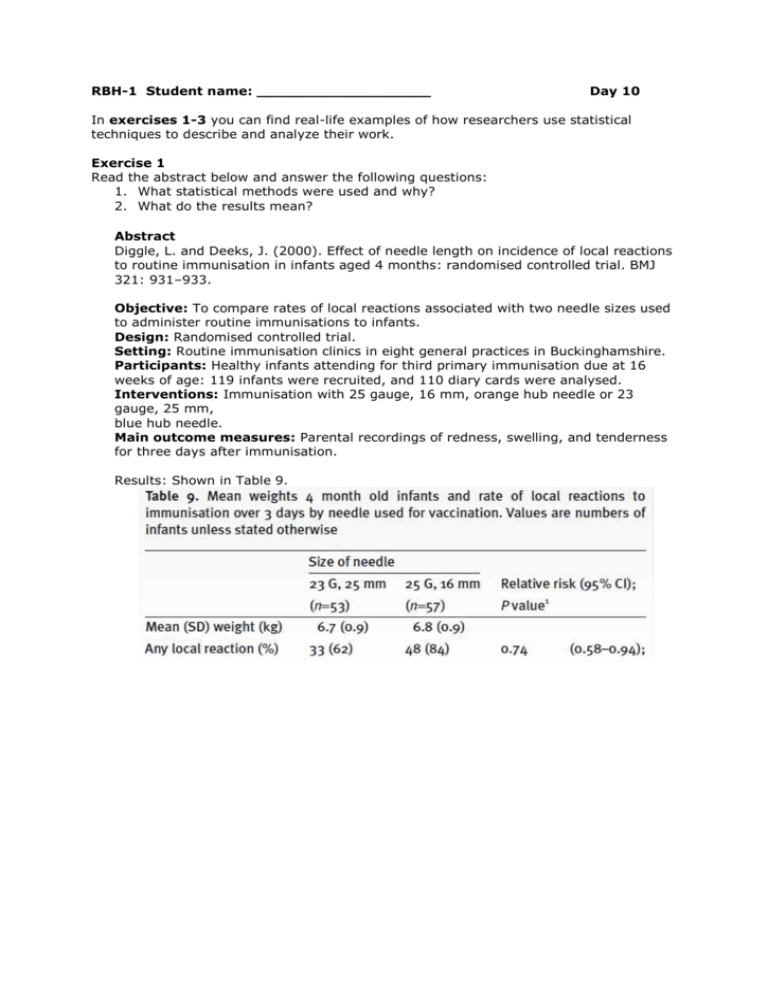
RBH-1 Student name: ___________________ Day 10 In exercises 1-3 you can find real-life examples of how researchers use statistical techniques to describe and analyze their work. Exercise 1 Read the abstract below and answer the following questions: 1. What statistical methods were used and why? 2. What do the results mean? Abstract Diggle, L. and Deeks, J. (2000). Effect of needle length on incidence of local reactions to routine immunisation in infants aged 4 months: randomised controlled trial. BMJ 321: 931–933. Objective: To compare rates of local reactions associated with two needle sizes used to administer routine immunisations to infants. Design: Randomised controlled trial. Setting: Routine immunisation clinics in eight general practices in Buckinghamshire. Participants: Healthy infants attending for third primary immunisation due at 16 weeks of age: 119 infants were recruited, and 110 diary cards were analysed. Interventions: Immunisation with 25 gauge, 16 mm, orange hub needle or 23 gauge, 25 mm, blue hub needle. Main outcome measures: Parental recordings of redness, swelling, and tenderness for three days after immunisation. Results: Shown in Table 9. Exercise 2 Read the abstract below and answer the following questions: 1. What statistical methods were used and why? 2. What do the results mean? Abstract Priest, P., Yudkin, P., McNulty, C. and Mant, D. (2001). Antibacterial prescribing and antibacterial resistance in English general practice: cross sectional study. BMJ 323: 1037–1041. Objective: To quantify the relation between community based antibacterial prescribing and antibacterial resistance in community acquired disease. Design: Cross sectional study of antibacterial prescribing and antibacterial resistance of routine isolates within individual practices and primary care groups. Setting: 405 general practices in south west and north west England. Main outcome measures: Correlation between antibacterial prescribing and resistance for urinary coliforms. Results: Antibacterial resistance in urinary coliform isolates is common but the correlation with prescribing rates was relatively low for individual practices (ampicillin and amoxicillin r=0.20, P=0.001). Exercise 3 Read carefully and interpret the results. 1. Would you recommend Bioflex magnets to your patients suffering from post-polio pain syndrome? Background Magnetic fields have been shown to have an effect on living tissue as early as the 1930's. Plants have been shown to have an improved growth rate when raised in a magnetic field1. More recently, doctors and physical therapists have used either static or fluctuating magnetic fields to aid in pain management, most commonly for broken bones. In the case study presented here, Carlos Vallbona1 and his colleagues sought to answer the question "Can the chronic pain experienced by postpolio patients be relieved by magnetic fields applied directly over an identified pain trigger point?" Experimental Design Summary Patients experiencing post-polio pain syndrome were recruited. Half of the patients were treated with an active magnetic device and half were treated with an inactive device. All patients rated their pain before and after application of the device. To simplify the presentaton, only the rating after the treatment will be analyzed here. In the raw data, this rating is referred to as "Score_2." The treatment condition is indicated by the variable "Active." Subjects receiving treatment with the active magnet have a "1" on this variable; subjects treated with the inactive placebo have a "2." Details The experimenters recruited 50 patients who not only had post-polio syndrome but also reported muscular or arthritic pain. These patients had significant pain for at least 4 weeks and had not taken any pain killers or anti-inflamatories for at least 3 hours before the study. The subjects all had a trigger point or painful region and had a body weight of less than 140% of the predicted weight for their age and height, and had a trigger point or circumscribed painful area. The magnets and placebos (described under Materials) were supplied in equal numbers from Bioflex. Each magnet or placebo was placed in number coded envelopes and delivered according to its shape. The code for placebos and magnets was not broken until the end of the study. One site of reported pain was evaluated and a trigger point for this pain was found by palpitation. The patient was asked to subjectively grade pain at the trigger point under palpitation on a scale from 0 to 10 (0 is the least pain, increasing to 10). Following the initial pain assessment, an envelope containing a device was randomly selected from the box containing active and inactive devices. This device was applied to the pain area for 45 minutes and then removed. The patient then evaluated his or her pain again at the region or trigger point. This second pain rating is the score analyzed here. 1 Mericle, R. P. et al. "Plant Growth Responses". in : Biological effects of magnetic fields. New York: Plenium Press 1964. p183-195. Vallbona, Carlos et. al., "Response of pain to static Magnetic fields in postpolio patients, a double blind Pilot study" Archives of Physical Medicine and Rehabilitation. (1997) Vol 78, American congress of rehabilitation medicine, p 1200-1203. Materials The magnets used in the study were Bioflex magnets. The magnetic field consists of concentrically arranged circles of alternating magnetic polarity. Seventy active devices identical inactive devices were used. Results Researchers got the following results describing the difference in pain rating between the control and the treatment group. Descriptive Statistics Result of the statistical test Test statistics -5.264 df P-value 48 < 0.001 Mean Difference (treatmentcontrol) -4.049 95% Confidence Interval of the Mean Difference Lower -5.596 Upper -2.503 Exercise 4 J.C. is a 57-year-old plump asymptomatic postmenopausal female with a family history of coronary artery disease. J.C. has familial hypercholesterolemia (treated with simvastatin) but is otherwise a healthy and very active woman. Her friend is taking conjugated estrogens–medroxyprogesterone acetate (Prempro), and J.C. wonders whether she should start on it to increase her energy. Following your review of the article entitled, "Risks and Benefits of Estrogen Plus Progestin in Healthy Postmenopausal Women: Principal Results from the Women's Health Initiative Randomized, Controlled Trial," by the Writing Group for the Women's Health Initiative (WHI) Investigators and published in the Journal of the American Medical Association (JAMA) in 2002, you estimate the cardiovascular protection effect of Prempro. Using the following table, select the correct absolute risk reduction and corresponding number needed to treat (NNT). a. The absolute risk reduction for translates to an (NNT) of 400 b. The absolute risk reduction for to an NNT of 233 c. The absolute risk reduction for of 5 d. The absolute risk reduction for NNT of 33 hip fracture in this study is 0.25%, which coronary artery disease is 0.43%, which translates all fractures is 2.09%, which translates to an NNT colorectal cancer is 0.3%, which translates to an
